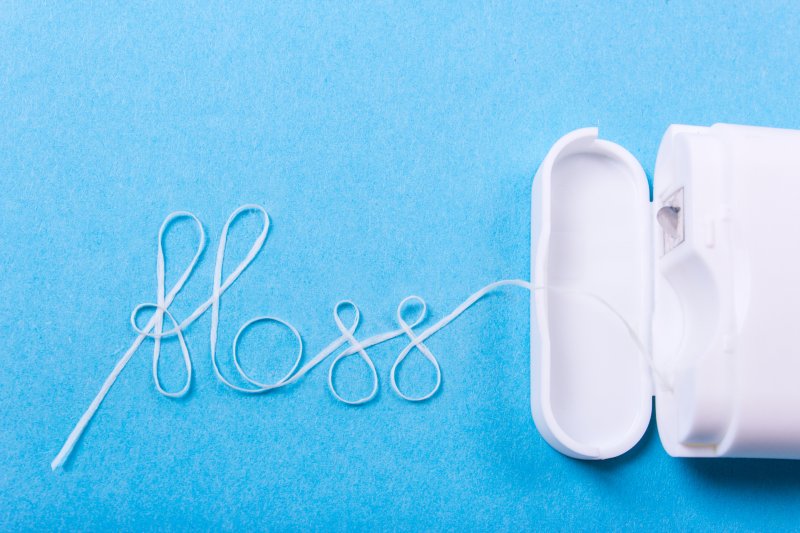
Dental implants have allowed millions of people to enjoy a complete smile after tooth loss, and dentists recommend them as the ideal dental replacement since they look, feel, and function just like real teeth. Since oral bacteria cannot metabolize porcelain or titanium, dental implants are immune to tooth decay, but these appliances still require proper oral hygiene to maintain the gums and jawbones that support them. Here’s a brief guide to proper flossing techniques for cleaning your dental implant.
Why Is Flossing Important?
Many people view brushing their teeth as their first line of defense against oral infections, but a toothbrush is only part of the equation. The spaces between teeth can host a wealth of plaque and food debris, leading to tooth decay and gum disease. While dental implants are immune to tooth decay, this infection can still affect the remaining natural teeth, and gum disease is one of the leading causes of implant failure. It is crucial to practice excellent oral hygiene after receiving dental implants by brushing, flossing, and using antibacterial mouthwash daily.
How Is Flossing with Dental Implants Different?
Anyone who has ever flossed can tell you that they experience discomfort if the floss is pushed too far along the tooth’s root past the gumline. This is because natural teeth are secured partly by connective tissue called periodontal ligaments. These strong ligaments contain nerves that send pain signals to the brain if you push too hard against them with dental floss.
After receiving dental implants, these ligaments are no longer present, meaning that the patient must take special care to avoid pressing to far into the gum tissue when flossing. Doing so can breach the peri-implant seal that protects your gums from infection, which can potentially lead to implant-destroying gum disease.
How Should I Floss with Dental Implants?
When flossing your dental implants, keep these tips in mind:
- Cut a length of dental floss that measures about eighteen inches
- You may use a floss threader if you find that it makes flossing easier
- Gently slide the floss between two teeth or implants and work it up and down against either side
- Move the floss around the base of the tooth or implant
- Take care not to move the floss too far below the gumline
- Gently slide the thread from between the teeth or implants and move on to a new section of floss before treating the next pair
Taking proper care of your dental implant can make the difference between it lasting for a lifetime and falling out a few months after being placed. Your dentist can provide you with all the instructions you need to properly maintain your implant.
About the Author
Dr. John Hamel earned his dental degree at the Emory School of Dentistry in 1985 and has completed a number of advanced postgraduate training programs. He is proud to serve as a member of the American Dental Association, the American Academy of Implant Dentistry, and the Georgia Dental Association. His office in Acworth offers general, restorative, cosmetic, and emergency dentistry as well as dental implants. To learn more about caring for your implants, contact his office online or dial (770) 426-9994.
